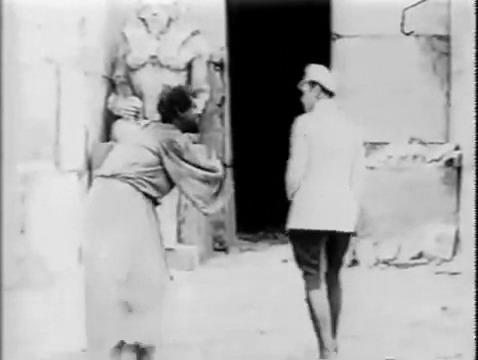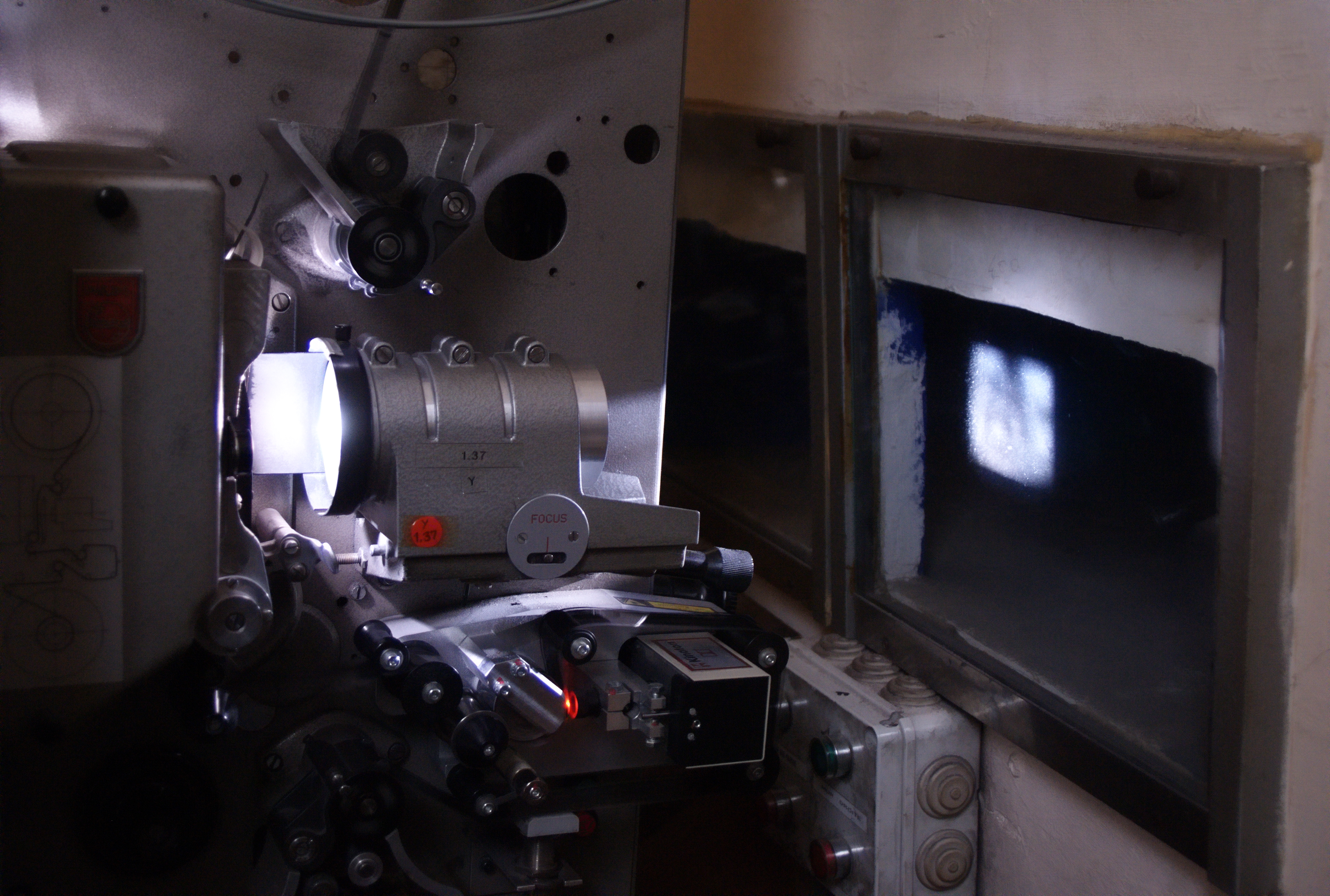|
Film Formats
A film format is a technical definition of a set of standard characteristics regarding image capture on photographic film for still images or film stock for filmmaking. It can also apply to projected film, either slides or movies. The primary characteristic of a film format is its size and shape. In the case of motion picture film, the format sometimes includes audio parameters. Other characteristics usually include the film gauge, pulldown method, lens anamorphosis (or lack thereof), and film gate or projector aperture dimensions, all of which need to be defined for photography as well as projection, as they may differ. Motion picture film formats Digital camera formats Photographic film formats See also *Film base * Keykode *Large format *Medium format *Microform Microforms are scaled-down reproductions of documents, typically either films or paper, made for the purposes of transmission, storage, reading, and printing. Microform images are commonly reduced ... [...More Info...] [...Related Items...] OR: [Wikipedia] [Google] [Baidu] |
Film Gate
The film gate is the rectangular opening in the front of a motion picture camera where the film is exposed to light. The film gate can be seen by removing the lens and rotating the shutter out of the way. The film is held on a uniform plane at a calibrated distance in the gate by a pressure plate behind the film. Occasionally, as the film passes through the gate, friction can cause small slivers of celluloid to break off and stick in the side of the opening. These pieces of debris are called ''hairs''. A "hair in the gate" will remain in front of the film and create a dark line that sticks into the edge of the film frame as the camera is filming a shot. A hair can ruin the shot and is almost impossible to fix in post production without using modern digital removal techniques. Because of the intractability of this problem the focus puller (or 1st Assistant Camera) will open the camera and examine the gate for hairs at the end of each shot. Normally the assistant director will call ... [...More Info...] [...Related Items...] OR: [Wikipedia] [Google] [Baidu] |
Microform
Microforms are scaled-down reproductions of documents, typically either films or paper, made for the purposes of transmission, storage, reading, and printing. Microform images are commonly reduced to about 4% or of the original document size. For special purposes, greater optical reductions may be used. Three formats are common: microfilm (reels), microfiche (flat sheets), and aperture cards. Microcards, also known as "micro-opaques", a format no longer produced, were similar to microfiche, but printed on cardboard rather than photographic film. History Using the daguerreotype process, John Benjamin Dancer was one of the first to produce microphotographs, in 1839. He achieved a reduction ratio of 160:1. Dancer refined his reduction procedures with Frederick Scott Archer's wet collodion process, developed in 1850–51, but he dismissed his decades-long work on microphotographs as a personal hobby and did not document his procedures. The idea that microphotography could be ... [...More Info...] [...Related Items...] OR: [Wikipedia] [Google] [Baidu] |
Medium Format (film)
Medium format has traditionally referred to a film format in photography and the related cameras and equipment that use film. Nowadays, the term applies to film and digital cameras that record images on media larger than the used in 35 mm photography (though not including 127 sizes), but smaller than (which is considered large format photography). In digital photography, medium format refers either to cameras adapted from medium-format film photography uses or to cameras making use of sensors larger than that of a 35 mm film frame. Some of the benefits of using medium-format digital cameras include higher resolution sensors, better low-light capabilities compared to a traditional 35mm DSLR, and a wider dynamic range. Characteristics Medium-format cameras made since the 1950s are generally less automated than smaller cameras made at the same time. For example, autofocus became available in consumer 35 mm cameras in 1977, but did not reach medium format unti ... [...More Info...] [...Related Items...] OR: [Wikipedia] [Google] [Baidu] |
Large Format
Large format refers to any imaging format of or larger. Large format is larger than " medium format", the or size of Hasselblad, Mamiya, Rollei, Kowa, and Pentax cameras (using 120- and 220-roll film), and much larger than the frame of 35 mm format. The main advantage of a large format, film or digital, is a higher resolution at the same pixel pitch, or the same resolution with larger pixels or grains which allows each pixel to capture more light enabling exceptional low-light capture. A 4×5 inch image (12.903 mm²) has about 15 times the area, and thus 15× the total resolution, of a 35 mm frame (864 mm²). Large format cameras were some of the earliest photographic devices, and before enlargers were common, it was normal to just make 1:1 contact prints from a 4×5, 5×7, or 8×10-inch negative. Formats The most common large format is 4×5 inches (10.2x12.7 cm), which was the size used by cameras like the Graflex Speed Graphic and Cro ... [...More Info...] [...Related Items...] OR: [Wikipedia] [Google] [Baidu] |
Film Base
A film base is a transparent substrate which acts as a support medium for the photosensitive emulsion that lies atop it. Despite the numerous layers and coatings associated with the emulsion layer, the base generally accounts for the vast majority of the thickness of any given film stock. Since the late 19th century, there have been three major types of film base in use: nitrate (until about 1951), acetate, and polyester. Nitrate In the literature of photography "nitrate" is used as a synonym for the chemical nitrocellulose. It is also referred to as "cellulose nitrate". Nitrocellulose is guncotton, the first replacement propellant for gun powder in firearms. Film stock with a nitrate base was the first transparent flexible plasticized base commercially available, thanks to celluloid developments by John Carbutt, Hannibal Goodwin, and Eastman Kodak in the 1880s. Eastman was the first to manufacture the film stock for public sale, in 1889. Unfortunately, nitrate also had the s ... [...More Info...] [...Related Items...] OR: [Wikipedia] [Google] [Baidu] |
Movie Projector
A movie projector is an opto- mechanical device for displaying motion picture film by projecting it onto a screen. Most of the optical and mechanical elements, except for the illumination and sound devices, are present in movie cameras. Modern movie projectors are specially built video projectors. (see also digital cinema) Many projectors are specific to a particular film gauge and not all movie projectors are film projectors since the use of film is required. Predecessors The main precursor to the movie projector was the magic lantern. In its most common setup it had a concave mirror behind a light source to help direct as much light as possible through a painted glass picture slide and a lens, out of the lantern onto a screen. Simple mechanics to have the painted images moving were probably implemented since Christiaan Huygens introduced the apparatus around 1659. Initially candles and oil lamps were used, but other light sources, such as the argand lamp and limelig ... [...More Info...] [...Related Items...] OR: [Wikipedia] [Google] [Baidu] |
Anamorphic Format
Anamorphic format is the cinematography technique of shooting a widescreen picture on standard 35 mm film or other visual recording media with a non-widescreen native aspect ratio. It also refers to the projection format in which a distorted image is "stretched" by an anamorphic projection lens to recreate the original aspect ratio on the viewing screen (not to be confused with anamorphic widescreen, a different video encoding concept that uses similar principles but different means). The word '' anamorphic'' and its derivatives stem from the Greek ''anamorphoun'' ("to transform"), compound of ''morphé'' ("form, shape") with the prefix ''aná'' ("back, against"). In the late 1990s and 2000s, anamorphic lost popularity in comparison to "flat" (or "spherical") formats such as Super 35 with the advent of digital intermediates; however, in the years since digital cinema cameras and projectors have become commonplace, anamorphic has experienced a considerable resurgence of popu ... [...More Info...] [...Related Items...] OR: [Wikipedia] [Google] [Baidu] |
Photographic Film
Photographic film is a strip or sheet of transparent film base coated on one side with a gelatin emulsion containing microscopically small light-sensitive silver halide crystals. The sizes and other characteristics of the crystals determine the sensitivity, contrast, and resolution of the film. The emulsion will gradually darken if left exposed to light, but the process is too slow and incomplete to be of any practical use. Instead, a very short exposure to the image formed by a camera lens is used to produce only a very slight chemical change, proportional to the amount of light absorbed by each crystal. This creates an invisible latent image in the emulsion, which can be chemically developed into a visible photograph. In addition to visible light, all films are sensitive to ultraviolet light, X-rays, gamma rays, and high-energy particles. Unmodified silver halide crystals are sensitive only to the blue part of the visible spectrum, producing unnatural-looking rendit ... [...More Info...] [...Related Items...] OR: [Wikipedia] [Google] [Baidu] |
3-perf And 2-perf Pulldown
Negative pulldown is the manner in which an image is exposed on a film stock, described in the number of film perforations spanned by an individual frame. It can also describe the orientation of the image on the negative, whether it is captured horizontally or vertically. Changing the number of exposed perforations allows a cinematographer to change both the aspect ratio of the image and the size of the area on the film stock that the image occupies (which affects image clarity). The most common negative pulldowns for 35 mm film are 4-perf and 3-perf, the latter of which is usually used in conjunction with Super 35. 2-perf, used in Techniscope in the 1960s, is enjoying a slight resurgence due to the birth of digital intermediate techniques eliminating the need for optical lab work. Vertical pulldown is overwhelmingly the dominant axis of motion in cinematography, although horizontal pulldown is used in IMAX, VistaVision (still in use for some visual effects work), and in ... [...More Info...] [...Related Items...] OR: [Wikipedia] [Google] [Baidu] |
Film Gauge
Film gauge is a physical property of photographic or motion picture film stock which defines its width. Traditionally, the major movie film gauges are 8 mm, 16 mm, 35 mm, and 65/70 mm (in this case 65 mm for the negative and 70 mm for the release print; the extra five millimeters are reserved for the magnetic soundtrack). There have been other historic gauges in the past, especially in the silent era, most notably 9.5 mm film, as well as a panoply of others ranging from 3 mm to 75 mm. Larger film gauge is generally associated with higher image quality, higher image detail, greater materials expense, heavier camera equipment, larger and most costly projection equipment, as well as greater bulk and weight for distribution and storage (both interim and archival). See also *Film format A film format is a technical definition of a set of standard characteristics regarding image capture on photographic film for still images or film stock for filmmaking. I ... [...More Info...] [...Related Items...] OR: [Wikipedia] [Google] [Baidu] |





_(14929131291).jpg)

